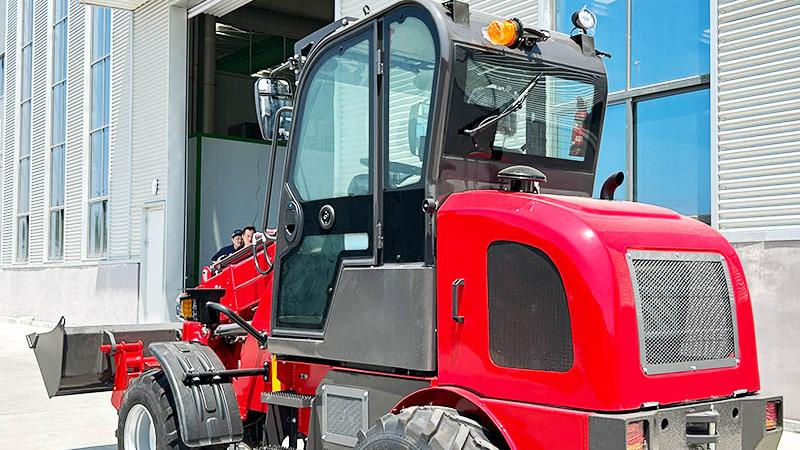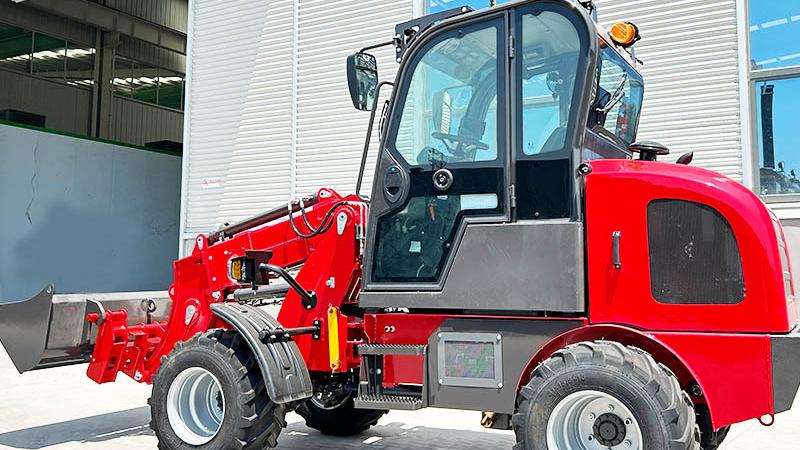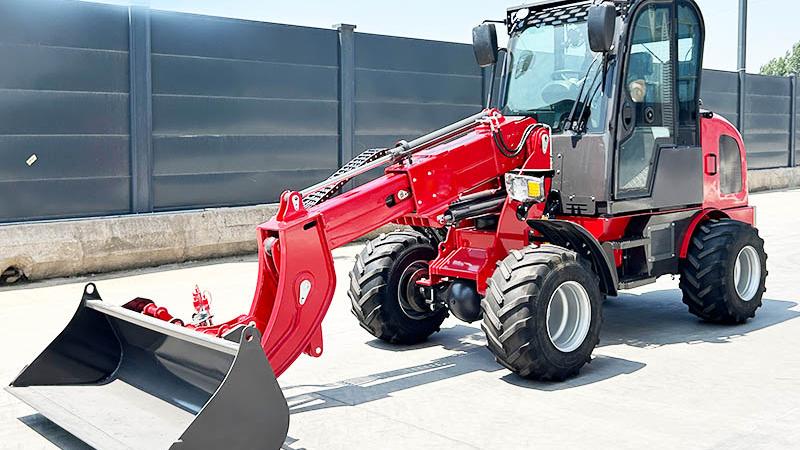In the dynamic and demanding environment of a construction site, efficiency, versatility, and power are the holy trinity of productivity. Standing as a testament to this principle is the telescopic loader, more commonly known as a telehandler, a machine that has fundamentally redefined material handling and access in modern construction. Unlike standard forklifts or fixed-boom cranes, the telescopic loader is characterized by its unique telescoping boom, which can extend forward and upward, granting it an unparalleled combination of reach and lift height. This primary feature is the cornerstone of its utility. At its core, the fundamental purpose of a telescopic loader in construction is to transport, place, and position materials with a level of precision and flexibility that other machines cannot match. It serves as a hybrid, merging the cargo-lifting capabilities of a forklift with the elevated reach of a small crane, all while maintaining the mobility and ruggedness needed to navigate the often challenging and uneven terrain of a construction site. From its operator's cab, a skilled professional can deftly maneuver loads of bricks, lumber, roofing materials, or HVAC units to heights of several stories, placing them directly where tradespeople are working. This eliminates the need for multiple machines or labor-intensive, multi-stage material handling processes, streamlining workflows and consolidating numerous tasks onto a single, highly adaptive platform. The telescopic loader is, therefore, not just a tool but a central hub for logistical operations on any substantial building project, a pivotal piece of equipment that keeps the flow of materials constant and the pace of work uninterrupted.
The applications of the telescopic loader are as varied as the construction sites it operates on, but its primary uses can be categorized into several key areas that highlight its indispensable role. The most common and fundamental application is vertical material placement. In the construction of buildings, whether residential, commercial, or industrial, there is a constant need to move materials from the ground to elevated working levels. A telescopic loader, equipped with standard pallet forks, excels at this task. It can lift a pallet of concrete blocks to the second-story level for masons, deliver bundles of steel joists to steel erectors on a rising frame, or place stacks of drywall directly onto a floor slab, all with the boom extending to place the load precisely where it is needed. This capability drastically reduces the physical strain on workers and minimizes the safety risks associated with manual carrying or using less stable methods like ramps and ladders. Beyond simple lifting, the telehandler's reach allows it to service areas that are inaccessible to other machinery. It can reach over obstacles, across foundations, or into partially enclosed structures, placing materials deep into a building's interior from an external position. This is particularly valuable in the early and late stages of construction when the building envelope is incomplete, and internal access for traditional forklifts is limited or non-existent. The machine's ability to act as a "bridge" for materials from a stable, external position to an unstable or inaccessible internal one is a unique advantage that cements its status as a primary tool for modern construction logistics.
Furthermore, the versatility of the telescopic loader is magnified by its vast array of attachments, which transform it from a specialized lifter into a truly multi-purpose machine. While the pallet fork is the default attachment, it is merely the starting point. Swapping out the forks for a bucket attachment turns the telehandler into a capable site loader for moving and lifting bulk materials like soil, gravel, or demolition debris. A crane jib attachment can convert it into a small, mobile crane for lifting irregularly shaped items or performing precise lifts. Other common attachments include winches for pulling or lifting, platforms for personnel lifting (though this requires specific safety protocols and often a certified operator), and truss booms for handling long, cumbersome materials like roof trusses or lumber. This interchangeability means that a single telescopic loader can perform the jobs of several different machines over the course of a single day. In the morning, it might be loading trucks with excavated material using a bucket; by midday, it could be placing roof trusses with a dedicated attachment; and in the afternoon, it might be lifting a pallet of windows to an upper floor. This reduces the capital expenditure and maintenance costs associated with maintaining a fleet of single-purpose vehicles and saves invaluable space on often cramped and cluttered job sites. The telescopic loader's chassis becomes a universal power base, and its hydraulic system the engine for a dozen different tools, making it the Swiss Army knife of the construction industry.
In conclusion, to ask what a telescopic loader is primarily used for in construction is to inquire about the very lifeblood of contemporary job site material management. Its primary use is to serve as the central, versatile, and powerful solution for the complex challenge of moving things from point A to point B, where point B is often high, deep, or difficult to access. The machine's core design, centered on the telescoping boom, provides a kinematic freedom that empowers contractors to overcome spatial and logistical hurdles with unprecedented efficiency. By combining the core functions of lifting, reaching, and placing with a simple yet powerful attachment system, the telehandler consolidates multiple equipment roles into one, driving down costs and accelerating project timelines. Its rugged construction and all-terrain capabilities ensure that it remains operational in the rough, unpredictable conditions that are synonymous with construction work. Therefore, the telescopic loader is not merely a piece of equipment; it is a strategic asset. Its presence on a site is a direct contributor to enhanced safety, reduced manual labor, optimized workflow, and overall project agility. As construction techniques and technologies continue to evolve, the telescopic loader stands firm as an enduringly essential and adaptable cornerstone, proving its primary worth on thousands of job sites every single day by doing almost any task asked of it, and doing it well.
Post time:Oct.07.2025



